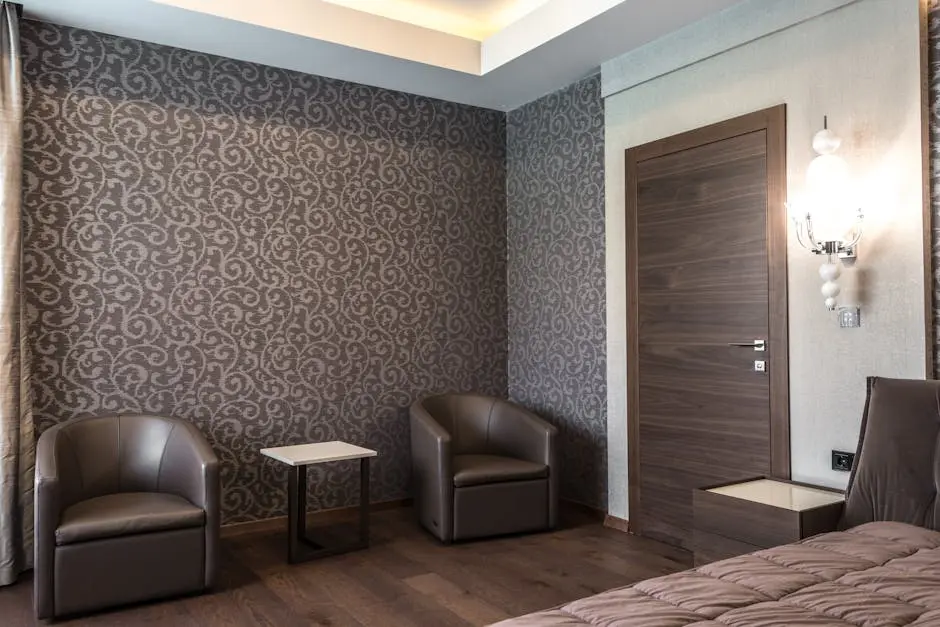What Are the Current Trends in Boutique Hotel Interior Design?
Boutique hotels are known for their unique charm and personalized experiences. As travelers increasingly seek accommodations that reflect their tastes and values, interior design in these hotels has become more important than ever. Let’s explore the current trends transforming boutique hotel interiors today.
Personalized Guest Experiences
Boutique hotels are elevating personalization, integrating custom decor elements and unique room layouts that cater to individual guest preferences. From selecting the color palette to choosing furniture that harmonizes with the serene environment, each aspect reflects the guest’s taste. By understanding what makes their guests tick, boutique hotels are creating spaces that speak directly to them on a personal level.
In addition to personalized decor, boutique hotels are offering tailored services that enhance the guest experience. Customized itineraries, personalized welcome notes, and bespoke amenities are just a few examples of how these hotels are setting themselves apart from the traditional hospitality industry.
Personalized digital experiences are also on the rise, allowing guests to select room features through apps or websites even before checking in. This use of technology adds to the seamless and bespoke experience guests crave.
Incorporating Local Culture and Art
Designers are drawing inspiration from local art and culture, ensuring that the hotel’s design pays homage to its location while adding a distinct touch of authenticity. By collaborating with local artists and craftsmen, boutique hotels weave cultural threads into their design, making each stay a vibrant tapestry of local heritage.
Art installations, traditional motifs, and locally sourced materials are seamlessly integrated into the design, transforming ordinary spaces into immersive cultural experiences. Guests not only enjoy their stay but also gain insights into the local culture, making their visit memorable and enriching.
By positioning local art and cultural elements as a significant component of the interior, boutique hotels enrich their aesthetic appeal and foster a deeper connection with the community, enhancing the overall guest experience.
Sustainable and Eco-Friendly Design
Sustainability is taking center stage, with many boutique hotels opting for eco-friendly materials and practices, aligning with the growing demand for responsible tourism. This includes the use of sustainably sourced woods, repurposed furniture, and energy-efficient lighting, all combining to create an eco-conscious environment that doesn’t compromise on style or comfort.
Water conservation measures, like low-flow showers and toilets, alongside waste reduction initiatives such as recycling bins and composting programs, are becoming staples in modern boutique hotels. These innovative sustainability practices encourage responsible travel and demonstrate a commitment to the environment.
The integration of green rooftops and vertical gardens showcases a continued commitment to eco-friendliness, improving air quality and offering guests serene natural environments to unwind in.
Integration of Smart Technology
The use of smart technology is on the rise, creating modern convenience through controls for lighting, temperature, and entertainment systems. Voice-activated assistants and smartphone integration allow guests to tailor the ambiance of their rooms with a simple command, making their stay more comfortable and connected.
Guests can now enjoy seamless check-ins, digital room keys, and customized room settings, all controlled through their mobile devices. Such technological advancements not only enhance guest satisfaction but also streamline operations for the hotel staff, ensuring a smoother experience for all involved.
Biophilic Design Elements
There’s an increasing trend towards incorporating nature into hotel interiors, with indoor plants, natural light, and organic materials enhancing guest comfort. This biophilic approach not only creates a more inviting atmosphere but also promotes well-being by connecting guests with the natural world.
Boutique hotels are capitalizing on this trend by designing spaces that capture the tranquility of nature. From expansive windows offering panoramic views of the surrounding landscape to interiors filled with lush foliage and earthy textures, these hotels provide a serene retreat from the hectic pace of modern life.
By embracing biophilic design, boutique hotels are crafting immersive environments that enhance guest relaxation and satisfaction while also demonstrating a commitment to sustainable design principles.
Embracing the Future of Boutique Hotel Design
The interior design of boutique hotels continues to evolve, focusing on authenticity, sustainability, and technology integration. By staying ahead of these trends, boutique hotels can offer guests an unforgettable experience that resonates with their personal style and values.

